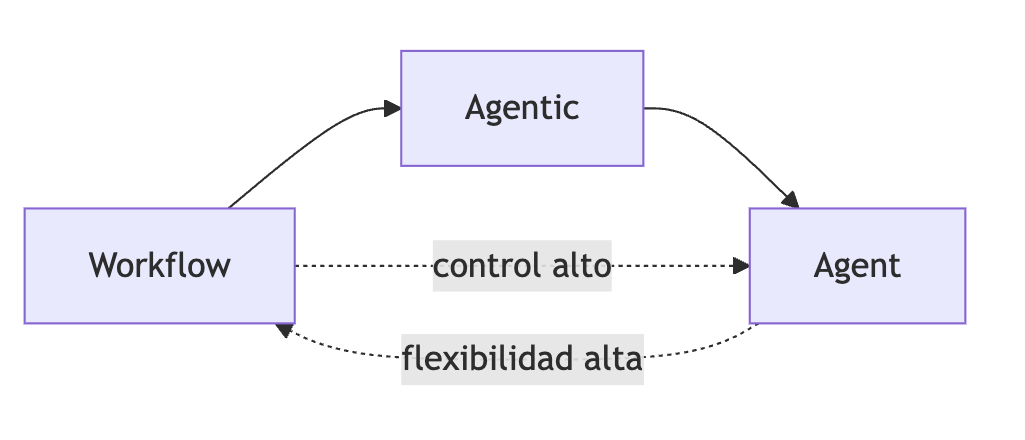Workflows, Agentic and Agents in LangChain4j: the map to not get lost
23-09-2025
In production environments with language models, choosing the right approach is not trivial. LangChain4j offers three main ways to structure interactions with LLMs: Workflows, Agentic and Agents. Understanding their differences and knowing when to apply each one is key to achieving control, traceability and operational efficiency.
1. The importance of terminological clarity
The confusion between these three approaches can lead to wrong architectural decisions, with direct impacts on latency, costs and maintainability. An incorrect choice can result in systems that are difficult to audit or scale, or in oversized solutions that do not provide marginal value.
2. Operational definitions
-
Workflow: A set of fixed and predefined steps. The LLM is limited to generating content within a controlled sequence of operations. It is the most deterministic and easy to audit approach.
-
Agentic: The language model decides which tools to use and in what order. The logic is no longer in a fixed flow, but partially delegated to the LLM, which acts as a dynamic coordinator.
-
Agent: An entity with its own memory, tools and policies. It has the capacity to reason about state, plan actions, remember past interactions and adapt. It is the most sophisticated and autonomous approach.
3. Comparison: control, flexibility and cost
| Approach | Control | Flexibility | Cost/Latency | Typical Cases | Main Risks |
|---|---|---|---|---|---|
| Workflow | High | Low | Low | Stable and predictable pipelines | Rigid to changes or ambiguities |
| Agentic | Medium | Medium-High | Medium | Tasks with moderate variability | Difficult to audit, errors hard to trace |
| Agent | Low | High | High | Complex adaptive systems | High cost, operational complexity |
4. Practical decision: start simple
A golden rule: start with workflows. Only evolve towards agentic models or agents if the marginal value justifies it. This implies evaluating whether the additional complexity brings tangible improvements in experience, case coverage or system performance.
"Start simple and evolve only if the marginal value compensates."
This iterative and value-centered approach is precisely the basis of lean development, which we systematically apply at Lean Mind. We bet on building what is necessary, validating early and optimizing only when the context requires it. This is how we help our clients develop effective, sustainable solutions aligned with their real objectives.
5. Mixed architecture: a pragmatic approach
In many real scenarios, the solution lies in combining approaches. A system can function by default as a workflow, but delegate decisions to an agentic when there is ambiguity, or incorporate an agent with memory for very specific cases.
Example: An enterprise chat that answers questions. If the user's intention is clear, a fixed flow is followed that queries the database or performs a calculation. Only in ambiguous cases is an agent activated to better interpret the request.

6. Technical checklist before deciding
- Do you need memory between interactions?
- What real tools will the system use?
- What level of traceability and auditing do you need?
- What is the acceptable token budget and latency?
7. Frequently asked questions
-
What is the practical difference between agentic and agent?
- Agentic only decides tools and execution order at the moment. Agent has state and can reason about historical context.
-
Can approaches be mixed?
- Yes. Designing mixed architectures is not only possible, but recommended in many scenarios.
Conclusion
Understanding the differences between workflows, agentic and agents is not just a technical matter, but a strategic decision that directly impacts the quality, cost and maintainability of systems built with LLMs. LangChain4j provides the necessary flexibility to scale from simple flows to complex agents, as long as a progressive and well-justified approach is adopted.
At Lean Mind, we help our clients trace this path with a clear vision: start with the essential, scale with purpose and always maintain control of the system in demanding production environments.
